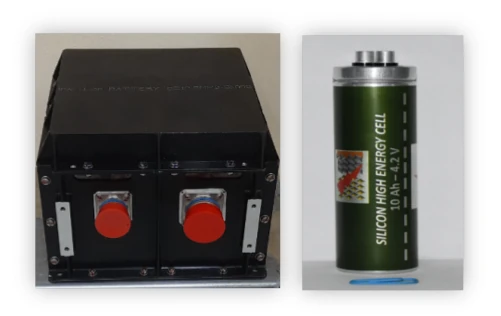The Indian Space Research Organisation (ISRO), on December 5, revealed two energy technologies within its orbital platform, POEM3, which was launched onboard PSLV-C58 on January 1. The flight demonstration of the Si-Gr anode-based High Energy Density Li-ion Cells on board POEM-3. In addition, ISRO also tested its Fuel Cell flight on POEM-3.
POEM (PSLV Orbital Experimental Module) is an ISRO experimental mission that conducts scientific experiments in orbit using the leftover PS4 stage of the PSLV launch vehicle as an orbital platform. As a stabilised platform, the PS4 stage would orbit the Earth. A separate Navigation, Guidance, and Control (NGC) system achieves attitude stabilisation. The solar panels installed around the PS4 tank and a Li-Ion battery power POEM. It uses four sun sensors, a magnetometer, gyros, and NavIC to navigate. It has dedicated control thrusters that use Helium gas storage. It has a telecommand feature enabled. POEM also carries cargo.
A release issued by the Indian Space Research Organisation (ISRO) on Friday stated that the Vikram Sarabhai Space Centre (VSSC)/ISRO, which is located in Thiruvananthapuram, had approved 10 Ah Silicon–Graphite anode-based high energy density Li-ion cells as a low-weight and low-cost alternative to traditional cells that are currently being used. It was possible to complete the flight demonstration of the cells as a battery by providing electricity to a resistive load located on the POEM-3 platform of the PSLV-C58 system.

The battery’s voltage, current, and temperature values measured in orbit were obtained through telemetry, and it was discovered that they agreed with the forecasts. In contrast to traditional Li-ion cells, which use graphite in its purest form as an anode material, this cell uses a composite material consisting of graphite and silicon. The cell’s energy density is improved because it accommodates more lithium ions inside a given unit mass of anode material. Along with the modification of the material, this cell also makes use of cost-effective hardware that is easily accessible, as well as a design that is based on crimped sealing, which greatly decreases the costs of both the fabrication and the hardware to a large degree.
There is a significant difference between the energy density of lithium-ion cells (157 Wh/kg) and the energy density of silicon high-energy lithium-ion cells (190 Wh/kg) with an operating voltage of 4.2 to 2.8 V. During the flight, the battery system operated for a total of 21 hours and 15 orbits, delivering a capacity of 8.9 Ah and a voltage of 0.4 V after it had been completely discharged. A stringent qualifying process and flight demonstration as piggyback payloads are carried out by the Vehicle Safety and Security Commission (VSSC) before introducing any new technology into operational vehicles and missions. These cells are treated in the same manner as the others have been.
The POEM experiment also demonstrated that the cells could survive and function in the severe circumstances found in space. Based on the confidence that was obtained via this performance, these cells are ready to be used in upcoming operational missions where it is anticipated that there will be a 35-40% reduction in the mass of the battery. In addition to its use on the ground, the system also has uses in space.
ISRO’s Fuel Cell
ISRO also tested a 100 W class Polymer Electrolyte Membrane Fuel Cell based Power System (FCPS) on POEM-3. The experiment aimed to evaluate the performance of polymer electrolyte membrane fuel cells in space and acquire data useful in designing systems for future missions. Hydrogen and oxygen gases stored onboard in high-pressure tanks led to 180 watts of power generation during the short-term test conducted onboard POEM. It offered a wealth of information regarding the performance of various static and dynamic systems that were components of the power system and the physics that were considered.

There is a direct conversion of hydrogen and oxygen gases into electricity through the use of hydrogen fuel cells, which also generate heat and pure water. It is an electric generator that operates on electrochemical principles, similar to those found in batteries, as opposed to the combustion reactions used in traditional generators. They have a high-efficiency level since they can generate energy straight from fuels without going through intermediate steps. Because the only byproduct they produce is water, they do not produce any emissions. These characteristics make them highly suitable for space missions involving humans and require electric power, water, and heat. This is because a single system may fulfil many criteria for the mission.
In addition, fuel cells have a large potential for application in general society. They are also considered the most suitable choice for replacing the engines of various vehicles currently in use and powering backup power systems because of their versatility. Fuel cells can provide a range and fuel recharge time comparable to a conventional engine used in the current period. This provides fuel cells a unique advantage over batteries, and it is anticipated that they will make it possible to travel without emitting any emissions. Because it allows for generating power and clean water, the fuel cell is a perfect power source for the Space Station.
